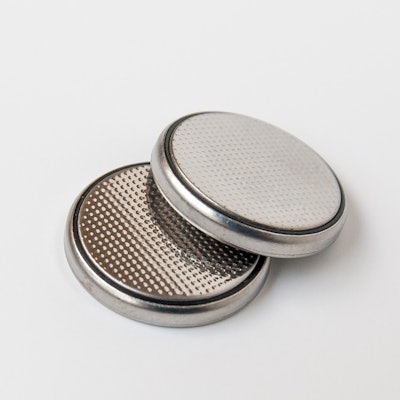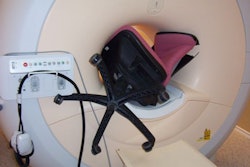
From having the patient ingest honey to scanning with a smaller field-of-view, there are a variety of tricks available to MRI facilities when scanning children who have swallowed lithium button batteries, according to a talk at the International Society for Magnetic Resonance in Medicine (ISMRM) virtual meeting.
In a May 15 presentation at ISMRM 2021, radiologic technologist Martin Sherriff of Alberta Children's Hospital in Calgary, Alberta, Canada, shared techniques he has developed over time for imaging the pediatric esophagus in children who have swallowed button batteries.
Sherriff noted that toddlers in particular may be attracted to "shiny" lithium batteries -- which are found in watches, car keys, hearing aids, and sometimes greetings cards -- and will not hesitate to place these batteries in their mouths. His hospital had five such cases at the outset of 2021, shortly after Christmas 2020, he said.
Ingestion of button batteries poses a risk to a child's esophagus of a localized, alkaline corrosion injury. Factors like the size of the battery, the current running through it, and the length of time the battery has been lodged in the esophagus will influence the severity of the injury, Sherriff explained.
"Technologists and radiographers need an extensive toolbox for successful imaging due to kids' wide variations in their physiology, their physical shape and size, and their patient compliance," he said.
At Alberta Children's Hospital, Sherriff was tasked with developing an imaging protocol related to ingestion of button batteries, and he researched pediatric protocols in Edmonton, Alberta, and at institutions elsewhere in the world. The protocol he developed is now being implemented at Alberta Children's Hospital and is largely based on an MRI protocol employed at the Children's Hospital of Atlanta and described by Riedesel et al in a November 2020 paper in the American Journal of Roentgenology.
The protocol requires about 15 minutes of imaging and about 20 minutes of table time, Sherriff said. It calls for follow-up imaging to be conducted to look for any improvements in edema that may have affected the esophageal wall and nearby trachea, aorta, and arteries, he said.
Despite the implementation of this protocol at Alberta Children's, Sherriff has proposed an alternative to imaging the entire esophagus in cases of ingestion of button batteries, and he is making the case to the radiologists at his own institution that imaging the entire esophagus isn't necessary.
"Is imaging the entire esophagus the best protocol or the best option?" asked Sherriff, noting MR would continue to be used. "I would say 'no.' If the injury from a button battery is localized, then shouldn't we just be imaging the area of interest? This is a battle I am having with my radiologists right now."
Sherriff has proposed an upper esophagus protocol that would image the oropharynx to the carina, and a slightly different protocol for the lower esophagus, which would image the arch to the diaphragm.
"There are several advantages to [separate protocols for the upper and lower esophagus]," said Sherriff, noting reduced coverage in the Z direction would allow for decreased imaging times and potentially improved image quality. He added that including MRI diffusion imaging might offer diagnostic value.
"As the esophagus tends to curve with the spine, I think coronal imaging is quite limited," Sherriff said. "I think optimizing [coronal imaging] to the region of interest is ideal."
Coronal imaging offers an incomplete diagnostic yield of the esophagus, particularly in cases in which the esophagus is collapsed, added Sherriff.
The first line of defense if a child ingests a lithium battery is to have the child ingest honey, which will minimize the alkaline corrosive effect of the battery, Sherriff noted.
With respect to prevention of the ingestion of button batteries, Sherriff pointed out that Australia has become the first country to implement safety and information standards, such that products have to contain secure battery compartments to prevent children from gaining access to the batteries.
The need for anesthesia is a consideration when imaging a child who has ingested a lithium battery.
"Can the patient do the imaging with or without sedation or anesthesia?" asked Sherriff. "Of the five [recent] cases at our hospital, all of them needed anesthetic [before imaging]."
Sherriff pointed out that it's worthwhile to have a discussion with the anesthesiologist about what induction technique will be employed, noting he has found some techniques -- such as total intravenous anesthetic using dexmedetomidine as the anesthetic agent -- tend to reduce airway obstruction and relax the diaphragm, making imaging easier for the radiation technologist.



















